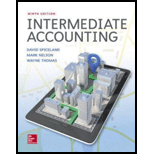
Concept explainers
Perpetual and periodic inventory systems compared
• LO8–1
The following information is available for the Johnson Corporation for 2018:
| Beginning inventory | $ 25,000 |
| Merchandise purchases (on account) | 155,000 |
| Freight charges on purchases (paid in cash) | 10,000 |
| Merchandise returned to supplier (for credit) | 12,000 |
| Ending inventory | 30,000 |
| Sales (on account) | 250,000 |
| Cost of merchandise sold | 148,000 |
Required:
Applying both a perpetual and a periodic inventory system, prepare the
Periodic Inventory System: Under this system, the balance of the merchandise inventory is not adjusted when the purchases and sales takes place, rather it is adjusted at the end of a particular period on a periodic basis.
Perpetual Inventory System refers to the inventory system that maintains the detailed records of every inventory transactions related to purchases and sales on a continuous basis. It shows the exact on-hand-inventory at any point of time.
To Prepare: the journal entries for the given transactions under perpetual and periodic inventory system.
Explanation of Solution
Prepare the journal entries for the given transactions under perpetual inventory system.
Purchase:
| Date | Account Title and Explanation | Post Ref. |
Debit ($) |
Credit ($) |
| Inventory | 155,000 | |||
| Accounts Payable | 155,000 | |||
| (To record the purchase of inventories on account) |
Table (1)
- Inventory is an asset and increased by $155,000. Therefore; debit the inventory account with $155,000.
- Accounts payable is a liability and increased by $155,000. Therefore, credit the accounts payable account with $155,000.
Freight:
| Date | Account Title and Explanation | Post Ref. |
Debit ($) |
Credit ($) |
| Inventory | 10,000 | |||
| Cash | 10,000 | |||
| (To record the freight cost) |
Table (2)
- Inventory is an asset and increased by $10,000. Therefore; debit the inventory account with $10,000.
- Cash is an asset and increased by $10,000. Therefore, credit the cash account with $10,000.
Purchase Returns:
| Date | Account Title and Explanation | Post Ref. |
Debit ($) |
Credit ($) |
| Accounts Payable | 12,000 | |||
| Inventory | 12,000 | |||
| (To record the return of inventories on account) |
Table (3)
- Accounts payable is a liability and decreased by $12,000. Therefore, debit the accounts payable account with $12,000.
- Inventory is an asset and increased by $12,000. Therefore, credit the inventory account with $12,000.
Sales:
| Date | Account Title and Explanation | Post Ref. |
Debit ($) |
Credit ($) |
| Accounts Receivable | 250,000 | |||
| Sales Revenue | 250,000 | |||
| (To record the sales on account) |
Table (4)
- Accounts Receivable is an asset and increased by $250,000. Therefore, debit the accounts receivable account with $250,000.
- Sales Revenue is a revenue that increases the equityby $250,000. Therefore, credit the sales revenue account with $250,000.
| Date | Account Title and Explanation | Post Ref. |
Debit ($) |
Credit ($) |
| Cost of Goods Sold | 148,000 | |||
| Inventory | 148,000 | |||
| (To record the cost of goods sold) |
Table (5)
- Cost of Goods Sold is an expense that decreases the equity by $148,000. Therefore, credit the cost of goods sold account with $148,000.
- Inventory is an asset and decreased by $148,000. Therefore, creditthe inventory account with $148,000.
Year-end Adjusting Entry:
NO ENTRY IS REQUIRED.
Prepare the journal entries for the given transactions under periodic inventory system.
Purchase:
| Date | Account Title and Explanation | Post Ref. |
Debit ($) |
Credit ($) |
| Purchases | 155,000 | |||
| Accounts Payable | 155,000 | |||
| (To record the purchase of inventories on account) |
Table (6)
- Purchase is an expense and increased by $155,000which decreased the equity. Therefore, debit the purchase account with $155,000.
- Accounts payable is a liability and increased by $155,000. Therefore, credit the accounts payable account with $155,000.
Freight:
| Date | Account Title and Explanation | Post Ref. |
Debit ($) |
Credit ($) |
| Freight-in | 10,000 | |||
| Cash | 10,000 | |||
| (To record the freight cost) |
Table (7)
- Freight-in is an expense and increased by $10,000which decreased the equity. Therefore, debit the freight-in account with $10,000.
- Cash is an asset and increased by $10,000. Therefore, credit the cash account with $10,000.
Purchase Returns:
| Date | Account Title and Explanation | Post Ref. |
Debit ($) |
Credit ($) |
| Accounts Payable | 12,000 | |||
| Purchase Returns | 12,000 | |||
| (To record the return of inventories on account) |
Table (8)
- Accounts payable is a liability and decreased by $12,000. Therefore, debit the accounts payable account with $12,000.
- Purchase returns is a contra-purchase account (with normal credit balance) and increased by $12,000. Therefore, credit the purchase returns account with $12,000.
Sales:
| Date | Account Title and Explanation | Post Ref. |
Debit ($) |
Credit ($) |
| Accounts Receivable | 250,000 | |||
| Sales Revenue | 250,000 | |||
| (To record the sales on account) |
Table (9)
- Accounts Receivable is an asset and increased by $250,000. Therefore, debit the accounts receivable account with $250,000.
- Sales Revenue is revenue that increases the equity by $250,000. Therefore, credit the sales revenue account with $250,000.
Cost of goods sold:
No entry is required for cost of goods sold under the periodic method.
Prepare the year-end Adjusting Entry.
| Date | Account Title and Explanation | Post Ref. |
Debit ($) |
Credit ($) |
| Cost of Goods Sold | 148,000 | |||
| Ending Inventory | 30,000 | |||
| Purchase Returns | 12,000 | |||
| Beginning Inventory | 25,000 | |||
| Purchases | 155,000 | |||
| Freight-in | 10,000 | |||
| (To record the cost of goods sold) |
Table (10)
- Cost of Goods Sold is an expense that decreases the equity by $148,000. Therefore, credit the cost of goods sold account with $148,000.
- Ending Inventory is an asset and increased by $30,000. Therefore, debit the inventory account with $30,000.
- Purchase returns is a contra-purchase account (with normal credit balance) and decreased by $12,000. Therefore, debit the purchase returns account with $12,000.
- Beginning Inventory is an asset and decreased by $25,000. Therefore, credit the inventory account with $25,000.
- Purchase is an expense and decreased by $155,000 which increased the equity. Therefore, credit the purchase account with $155,000.
- Freight-in is an expense and decreased by $10,000which increased the equity. Therefore, credit the freight-in account with $10,000.
Working note:
Calculate the cost of goods sold.
| Particulars | Amount ($) | Amount ($) |
| Beginning Inventory | 25,000 | |
| Add: Purchases | 155,000 | |
| Less: Purchase Returns | (12,000) | |
| Net purchases | 153,000 | |
| Goods available for sale | 178,000 | |
| Less: Ending Inventory | (30,000) | |
| Cost of goods sold | 148,000 |
Table (11)
Want to see more full solutions like this?
Chapter 8 Solutions
Intermediate Accounting
- Can you explain this general accounting question using accurate calculation methods?arrow_forwardI need help finding the accurate solution to this general accounting problem with valid methods.arrow_forwardI am looking for help with this general accounting question using proper accounting standards.arrow_forward
 Cornerstones of Financial AccountingAccountingISBN:9781337690881Author:Jay Rich, Jeff JonesPublisher:Cengage Learning
Cornerstones of Financial AccountingAccountingISBN:9781337690881Author:Jay Rich, Jeff JonesPublisher:Cengage Learning Intermediate Accounting: Reporting And AnalysisAccountingISBN:9781337788281Author:James M. Wahlen, Jefferson P. Jones, Donald PagachPublisher:Cengage LearningPrinciples of Accounting Volume 1AccountingISBN:9781947172685Author:OpenStaxPublisher:OpenStax College
Intermediate Accounting: Reporting And AnalysisAccountingISBN:9781337788281Author:James M. Wahlen, Jefferson P. Jones, Donald PagachPublisher:Cengage LearningPrinciples of Accounting Volume 1AccountingISBN:9781947172685Author:OpenStaxPublisher:OpenStax College Financial Accounting: The Impact on Decision Make...AccountingISBN:9781305654174Author:Gary A. Porter, Curtis L. NortonPublisher:Cengage Learning
Financial Accounting: The Impact on Decision Make...AccountingISBN:9781305654174Author:Gary A. Porter, Curtis L. NortonPublisher:Cengage Learning Financial And Managerial AccountingAccountingISBN:9781337902663Author:WARREN, Carl S.Publisher:Cengage Learning,
Financial And Managerial AccountingAccountingISBN:9781337902663Author:WARREN, Carl S.Publisher:Cengage Learning, Accounting (Text Only)AccountingISBN:9781285743615Author:Carl Warren, James M. Reeve, Jonathan DuchacPublisher:Cengage Learning
Accounting (Text Only)AccountingISBN:9781285743615Author:Carl Warren, James M. Reeve, Jonathan DuchacPublisher:Cengage Learning





